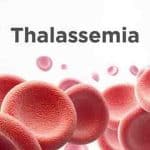ISLAMABAD, FEB 20 (ONLINE): According to estimates, one in three people who have type 2 diabetes also have chronic kidney disease.
Both chronic conditions are associated with an increased risk of stroke and heart attack.
A new study has found a medication already used to treat people who have type 2 diabetes and/or chronic kidney disease with added heart disease risks also helps lower their stroke and heart attack risk.
Researchers estimate that as many as 840 million people globally live with chronic kidney disease — a disease that steadily damages the kidneys, leading to function loss.
Another estimated 828 million peopleTrusted Source around the world have diabetes, which is when their body does not use or make insulin properly. Up to 95%Trusted Source of people with diabetes have type 2 diabetes.
While these are two separate chronic conditions, they are linked as about one in every three adultsTrusted Source with type 2 diabetes also has chronic kidney disease.
Additionally, both conditions are associated with an increased risk for cardiovascular complications such as stroke and heart attack.
Now, a new study recently published in the journal The Lancet Diabetes & EndocrinologyTrusted Sourcehas found that a U.S. FDA-approved medication already used to treat people who have type 2 diabetes and chronic kidney disease with added heart disease risks also helps lower their stroke and heart attack risk.
Focusing on sotagliflozin
This study analyzed data from the SCORED trial, which was a multicenter clinical trial including study participants who had type 2 diabetes, chronic kidney disease, and heart disease risks. Participants in the study received either a placebo or a medication called sotagliflozin.
“The SCORED trial examined patients with diabetes, kidney disease, and additional cardiovascular risks, because of the known high rate of cardiac problems these people face,” Deepak L. Bhatt, MD, MPH, MBA, director of Mount Sinai Fuster Heart Hospital and the Dr. Valentin Fuster Professor of Cardiovascular Medicine at the Icahn School of Medicine at Mount Sinai, and lead author of this study told Medical News Today.
“We saw a significant benefit in terms of fewer heart failure and adverse kidney events. We wanted to see if heart attack and stroke risks might also be reduced,” he said.
“(Sotagliflozin) is a drug that blocks a receptor in the kidneys, called SGLT2 (sodium-glucose cotransporter 2), leading to glucose elimination in the urine, among many additional effects,” Bhatt added. “Other popular medications such as empagliflozin and dapagliflozin also block this receptor.”
23% heart attack, stroke risk reduction with sotagliflozin
For this study, Bhatt and his team analyzed data from almost 10,600 SCORED trial participants who received either sotagliflozin or a placebo between 2017 to 2020 and were followed for about 16 months.
Upon analysis, researchers found that participants taking sotagliflozin lowered their risk of heart attack, stroke, and death from cardiovascular causes by 23% compared to those taking the placebo.
“The benefit occurred within just three months of starting the drug, which is … quite remarkable to see such an early effect in a stable, outpatient population,” Bhatt said. “Examined separately, there was a 32% reduction in heart attack and a 34% reduction in stroke.”
“People with diabetes and kidney disease are at very high risk of cardiovascular complications, such as heart attack and stroke,” he added. “We need new therapies to help reduce these risks.”
Inhibiting SGLT1 + SGLT2 receptors may be the key
When asked how sotagliflozin might help lower heart attack and stroke risk, Bhatt said it may be because the drug also blocks the SGLT1 (sodium-glucose cotransporter 1) receptor as well.
“This receptor is found in the kidneys, gut, heart, and brain,” he explained. “These additional sites of action may explain why sotagliflozin reduces the risk of both heart attack and stroke, and those other drugs do not.”
“In patients with diabetes, kidney disease, and additional cardiovascular risk factors, combined inhibition of the SGLT2 and SGLT1 receptors by sotagliflozin reduces the risk of heart failure, kidney disease progression, heart attacks, and strokes. This multi-pronged approach could lead to a substantial reduction in cardiovascular risk in eligible patients who are treated with this medication.”
— Deepak L. Bhatt, MD, MPH, MBA
When asked about the next steps for this research, Bhatt said that sotagliflozin should be studied in other populations at high risk for heart attack and stroke.
“Those would need to be large, long-term trials, so we would need to find someone to fund such research,” he continued. “In the meantime, smaller basic science experiments are ongoing to examine the biological actions of blocking SGLT1 receptors that may explain sotagliflozin’s unique ability (among the SGLT inhibitor class of drugs) to reduce heart attack and stroke risk.”
Helping improve the lives of high risk patients
MNT also had the opportunity to speak with Michael Broukhim, MD, a board certified interventional cardiologist at Providence Saint John’s Health Center in Santa Monica, CA, about this study.
“SGLT2 inhibitors have become an important part of our treatment of patients with heart failure,” Broukhim said. “If sotagliflozin has the added benefit of reduction in myocardial infarction and stroke, we may wish to use this agent more to treat high risk patients.”
“People with type 2 diabetes or kidney disease have significantly elevated risks for heart attack and stroke despite our available treatments. If we have additional agents that can reduce risks of heart and stroke, that will help us improve the lives of these high-risk patients.”
— Michael Broukhim, MD
“I would like to see more data differentiating the actions of a SGLT2 inhibitor and an agent that inhibits both SGLT1 and SGLT2, including some comparative effectiveness research to see if there is a true difference between the various agents that we are utilizing, and if certain patient populations will benefit more from one particular agent over the other,” Broukhim added.
Follow the PNI Facebook page for the latest news and updates.








